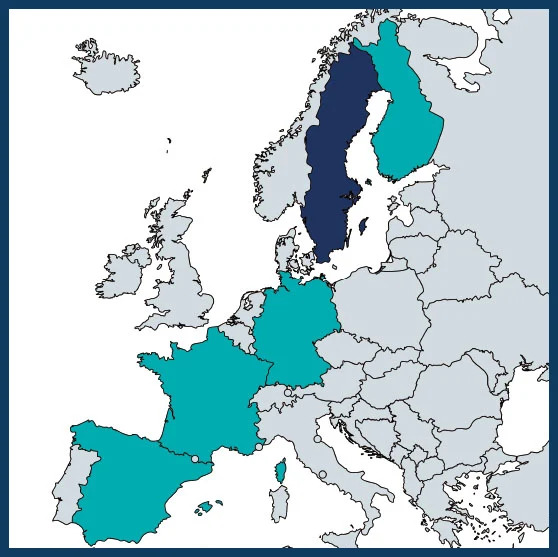12-2018 to 03-2022
€ 1,277,311
Camilla Andersson
camilla.andersson@smhi.se
Swedish Meteorological and Hydrological Institute (SMHI), Norrköping, SWEDEN
Lund University, SWEDEN
Stockholm University, SWEDEN
University of Gothenburg, SWEDEN
Finnish Meteorological Institute, Helsinki, FINLAND
INERIS, Verneuil-en-Halatte, FRANCE
Senckenberggesellschaft für Naturforschung, Frankfurtm am Main, GERMANY
Centro de Investigaciones Energéticas, Medioambientales y Tecnológicas (CIEMAT), Madrid, SPAIN

Biodiversity includes variation between species, as within species and habitats on Earth. Among the greatest threats to biodiversity are climate change, destruction of habitats and other human activities. High-altitude mountain regions are one of our most pristine environments, often with historically small impacts from air pollution, but at risk of being disproportionately impacted by climate change. We focus on three mountainous regions: the Scandinavian Mountains, the Guadarrama Mountains in Spain, and the Pyrenees in France, Andorra and Spain. We will study the impact of drivers of change of biodiversity such as future climate change, increased incidences of wild fires, emissions from new shipping routes in the Arctic as ice sheets are melting, human impacts on land use and management practices (such as reindeer grazing) and air pollution.
The aim of this project is to develop future scenarios of biodiversity and ecosystem services for decision-makers and other end users to enable enlightened decisions for adaptation and policy on local and regional scales. The project will focus on changes to vegetation, including for example changes to the forest and tree line, and the impact on and of grazing and wild fires, as well as other indicators and services. The scenarios will represent possible trajectories until the 2050s.
The following main activities will be implemented:
• Simulate the changes in climate, nitrogen deposition and exposure to ozone in mountain ecosystems as a consequence of greenhouse gas emission and air pollution scenarios;
• Model the effect of mountain ecosystems in the Scandinavian, French and Spanish study areas in response to the developed climate and air pollution (AP) scenarios.
BioDiv-Support will also develop a web-based planning tool where local stakeholders in each region can explore the project results to understand how scenarios of climate change, air pollution and policy development will affect these ecosystems. Local stakeholders will be involved through different workshops. On the Global and European scales we will participate in meetings by networks bridging between the scientific and the policy communities, e.g. Arctic Monitoring and Assessment Programme (AMAP), United Nations Economic Commission for Europe (UNECE), Convention on Long-Range Transboundary Air Pollution (CLRTAP) on the subject of Hemispheric Transport of Air Pollution (HTAP).